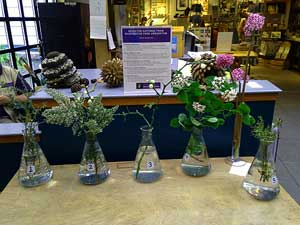April Color Appears at the Washington Park Arboretum (Part II)

1) Melicytus angustifolius
- This southern hemisphere Violaceae relative thrives in rocky places in mountains or on coasts, or in evergreen forests.
- Is ‘dioecious’ or ‘of two houses’ in Greek translation; male and female flowers are present on separate plants.
2) Erica arborea var. alpina
- Found along the southern end of Arboretum Drive, this is one of the older collections in the Washington Park Arboretum, dating back to 1947.
- This form, var. alpina, is a smaller shrub, very hardy, and with brighter green foliage, making an imposing highlight among smaller heaths and heathers.
3) Poncirus trifoliata (syn. Citrus trifoliata)
- Bitter, non-edible yellow fruits that resemble a small orange
- Two large specimens in the Arboretum found in grid 8-1W and 12-B, north of the large parking lot off of Lake Washington Bouvelard.
4) Viburnum carlesii var. bitchiuense
- This spicy smelling Viburnum is the intoxicating fragrance you’ll be hit with the moment you walk out the front door of the Graham Visitor’s Center.
- Listed on the IUCN Red List of Threatened Plants in 1997, our cultivation of this plant helps to preserve a propagation source for future plants.
5) Phyllocladus alpinus
- This New Zealand conifer can photosynthesize through highly modified, leaf-like shoots called phylloclades as well as through leaves.
- The newly-formed seed cones are berry-like, with a fleshy white aril.
- Male and female flowers are separate, but borne on the same plant.